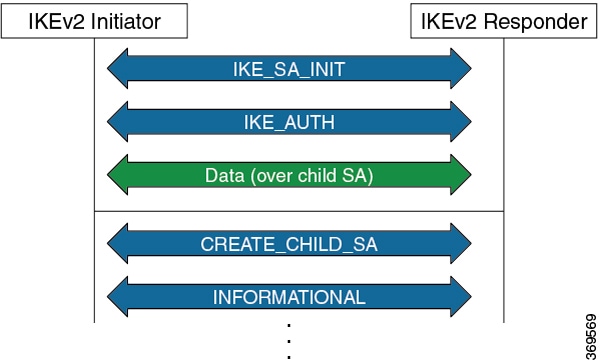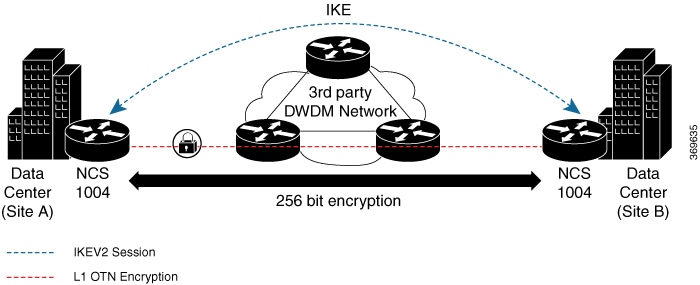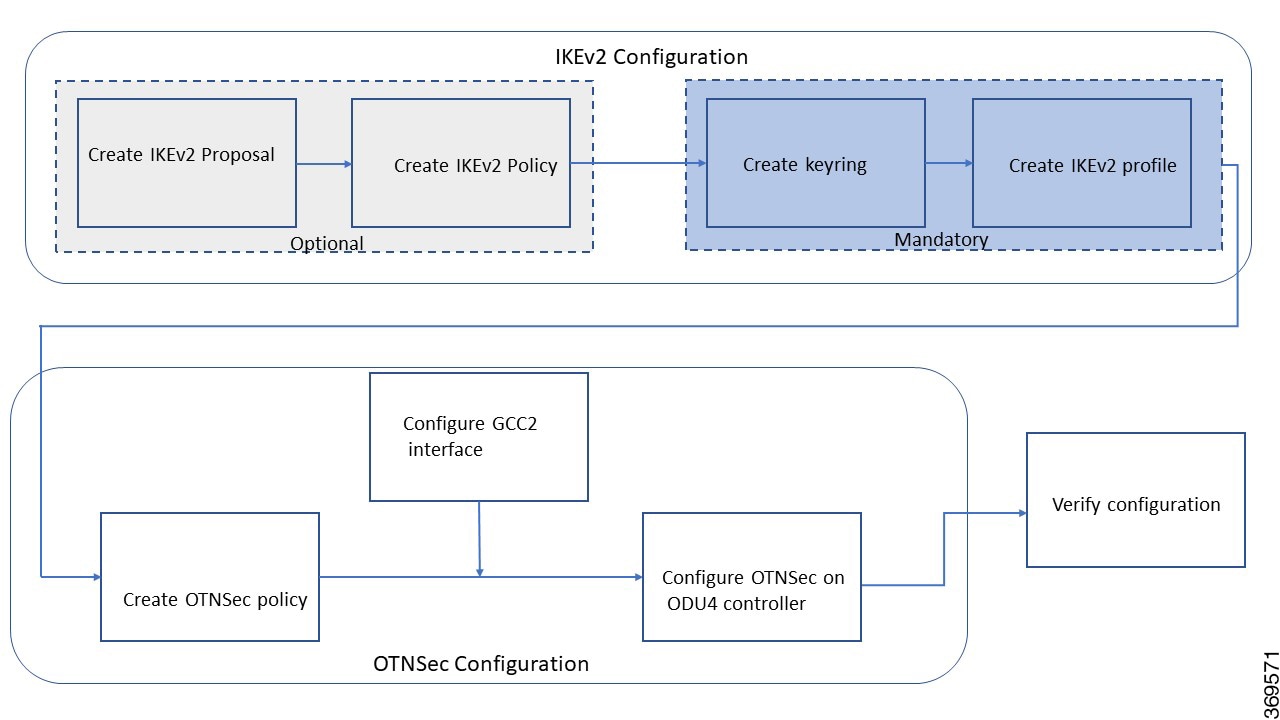IKEv2 Overview
Internet Key Exchange Version 2 (IKEv2) is a request and response encryption that establishes and handles security associations (SA) in an authentication suite, such as OTNSec, to ensure secure traffic. IKE performs mutual authentication between two endpoints and establishes an IKE Security Association (SA). All IKE communications consist of pairs of messages that include a request and a response. The pair is called an exchange or a request-response pair. The first two exchanges of messages establishing an IKE SA are called the IKE_SA_INIT exchange and the IKE_AUTH exchange; subsequent IKE exchanges are called either CREATE_CHILD_SA exchanges or INFORMATIONAL exchanges. IKEv2 uses sequence numbers and acknowledgments to provide reliability, and mandates some error-processing logistics and shared state management (windowing). IKEv2 does not process a request until it determines the requester. This helps to mitigate DoS attacks. IKEv2 provides built-in support for Dead Peer Detection (DPD), which periodically confirms the availability of the peer node. When there is no response from the peer node, the system attempts to establish the session again.

IKEv2 is defined in RFC 7296 and consists of the following constructs:
-
Keyring
A keyring is a repository of symmetric and asymmetric pre-shared keys that is configured for a peer and identified using the IP address of the peer. The keyring is associated with an IKEv2 profile and therefore, caters to a set of peers that match the IKEv2 profile. This is a required configuration for the pre-shared keys authentication method that is used for NCS 1004.

Note
The certificate-based authentication that uses RSA signatures can be used instead of the keyring. If both methods of authentication are configured, the certificate-based authentication takes precedence. See IKEv2 Certificate-Based Authentication.
-
IKEv2 Profile
An IKEv2 profile is a repository of nonnegotiable parameters of the IKE SA, such as authentication method and services that are available to the authenticated peers that match the profile. The profile match lookup is done based on the IP address of the remote identity. For security purposes, the IKE SAs have a lifetime that is defined in the IKEv2 profile. The lifetime range, in seconds, is from 120 to 86400. The SAs are rekeyed proactively before the expiry of the lifetime. The default lifetime is 86400. An IKEv2 profile must be attached to an OTNSec configuration on the ODU4 controllers or ODUC4 controllers on both the IKEv2 initiator and responder. This is a required configuration.

Note
Only one authentication method is supported for the local peer but multiple authentication methods can be configured for the remote peer.
If both methods of authentication are configured , keyring and certificate trustpoint (see, IKEv2 Certificate-Based Authentication) in the profile, the remote peer can authenticate itself using either method. authentication remote [pre-shared| rsa-signature] can be used to exclusively control the remote authentication method. Similarly, authentication local [pre-shared | rsa-signature] can be used to exclusively configure local authentication method. If it is not configured, the certificate-based authentication takes precedence.
-
IKEv2 Proposal
An IKEv2 proposal is a collection of transforms that are used in the negotiation of IKE SAs as part of the IKE_SA_INIT exchange. The IKE2 proposal must be attached to an IKEv2 policy. This is an optional configuration. The transform types used in the negotiation are as follows:
-
Encryption algorithm
-
Integrity algorithm
-
Pseudo-Random Function (PRF) algorithm
-
Diffie-Hellman (DH) group

Note
The IKEv2 proposal must have at least one algorithm of each type. It is possible to specify multiple algorithms for each type; the order in which the algorithms are specified determines the precedence.
-
-
IKEv2 Policy
IKEv2 employs policies that are configured on each peer to negotiate handshakes between the two peers. An IKEv2 policy contains proposals that are used to negotiate the encryption, integrity, PRF algorithms, and DH group in the SA_INIT exchange. An IKEv2 policy is selected based on the local IP address. This is an optional configuration.

Note
The default IKEv2 proposal is used with default IKEv2 policy in the absence of any user-defined policy.



 Feedback
Feedback